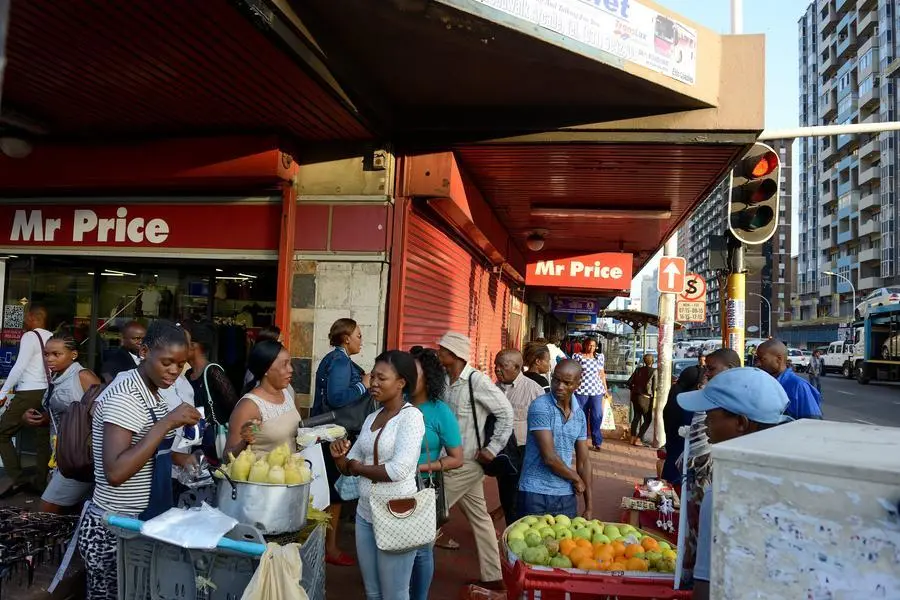PHOTO
The findings of TransUnion's Q3 2022 South Africa Industry Insights Report have been released.
The latest analysis reveals that South Africans opened more credit accounts to navigate the pressured economic climate, but that lenders kept closer oversight by offering lower loan amounts and limits on revolving facilities to mitigate risk.
This trend prevailed across credit cards, non-bank personal loans, home loans, and clothing accounts.
Overall, credit originations increased by 14.5% year-over-year (YoY) in Q2 2022 (most recent quarter due to reporting lag), with enquiries (applications for new credit) having increased by 13.1% YoY in Q2 2022.
Younger consumers were responsible for driving the growth in new business: Gen Z consumers accounted for 11.5% of all credit originations, up 2.3% from Q2 2021, while Millennial consumers were responsible for 46.3% (up 0.3%). Gen X and Baby Boomers’ share of new business declined by 1.5% and 1.1% respectively.
Outstanding balances across all lending product types decreased by 2.3% YoY in Q3 2022, and account volume delinquencies on accounts that are delinquent for three months or more improved by 6.6% compared to the Q3 in 2021. Balances on most unsecured products have returned to pre-pandemic levels.
Even though overall consumer confidence improved slightly from the prior quarter, it remained at a negative level of -20 for Q3 2022. This low consumer confidence may be driving consumers to shift their spending from discretionary to essential items, and at the same time to using credit to fund more of their spending.
This was confirmed by findings in the TransUnion Q3 Consumer Pulse Study, in which 56% of those surveyed expected to make even more discretionary spending cuts in the following three months. This is despite one in three consumers reporting an increase in household income over the past three months, which may have led to an improvement in consumers’ capacity to service debt.
These findings are in the context of the inflation rate reaching 7.8% in July – a 13-year high that was well above the upper limit of the South African Reserve Banks’ target range of 3% to 6%.
The annual core inflation measure, which excludes food prices, non-alcoholic beverages, fuel and energy, rose to 4.4% in July – the highest rate since October 2017.
This higher inflation environment led to higher prices across consumers’ basic needs, including food, fuel, and clothing, pressuring them to turn to credit to make ends meet. In response to these pressures, the South African Reserve Bank raised the repo rate to 6.25% and the prime lending rate to 9.75% (September 2022), increasing the average consumer’s credit cost.
Consumers signed up for more credit cards
Enquiry volumes for credit cards were up 9.6% YoY in Q2 2022. Lenders are meeting demand as originations for the period were up 39.4% YoY. At the same time, the average limit granted by lenders on new cards issued in Q2 2022 was 5.2% lower YoY, with this lower average limit being due to the riskier borrowers that are driving market growth.
Sub-prime accounts contributed 53% of originations (up 6.2% YoY). Despite the strong quarter of credit-card growth, origination volumes remain 18% below pre-pandemic levels compared to the same quarter in 2019. Card demand remained strong in the third quarter (up 9.1% YoY).
“These trends indicate that South Africans are turning to credit to make ends meet in the current high inflation environment, which has remained above the Reserve Bank’s target range since May 2022,” said Weihan Sun, director, financial services research and consulting at TransUnion Africa.
“This increase in demand is due to the increased costs of living and consumer essentials, which are in turn driven by high fuel prices and international sociopolitical pressures.
“Although card issuers are managing risk carefully by offering lower limits on new accounts, they need to also deploy best practice account-management practices to ensure delinquencies are managed accordingly and appropriately,” he added.
In contrast, clothing accounts and retail revolving accounts saw higher new account limit amounts, likely due to increased product costs driven by the high inflation rate, while bank and non-bank personal loans and vehicle asset finance also saw increased opening amounts.
While increased opening amounts for vehicle asset finance is likely due to rising vehicle prices, higher bank and non-bank personal loan opening balances could be driven by consumers needing to supplement their regular income in the current pressured economic climate, or as a result of debt consolidation.
Aligning with credit-card and clothing-account trends, origination volumes for bank personal loans increased by 5.5% YoY in Q2 2022, while non-bank personal-loan originations grew by 14.3% during Q2. Growth in bank personal loans continued for the fifth consecutive quarter.
Delinquency rates improve, despite economic pressures
Delinquency rates improved across all credit products, apart from home loans, during Q3 2022, with account-level delinquencies on credit cards down 20 basis points (bps) YoY to 13.3%, on personal loans down 90bps YoY to 33.5%, and non-bank personal loans having improved by 130 bps to 37.3%.
“This is likely because consumers are concerned about the future outlook, and being conservative in their spending in anticipation of further economic headwinds ahead. They’re being careful to not become overly indebted as further interest-rate increases are likely to put some consumer wallets under even more pressure in the coming months,” Sun explained.
“It could also be that lenders are being more proactive in account management, particularly now that new business is primarily driven by younger and riskier borrowers.”
Holiday spending is likely to continue despite consumer sentiment suggesting cutbacks. It may be another reason consumers made regular payments in Q3, improving their delinquency levels to maintain access to revolving credit for the holiday period.
“South Africans are turning to credit to maintain their current lifestyles, but they’re doing so with caution, as shown by improved delinquency performances, reductions in discretionary spending, and fewer large purchases,” Sun added.
South Africans take advantage of slow house-price growth
Home-loan originations continued to grow by 8.9% YoY in Q2 2022, although the average new loan amount decreased by 6.4%, as a result of consumers purchasing more affordable properties.
Despite new mortgage account growth, overall outstanding balances decreased by 3.5% and average balances decreased by 7.1% during Q3 2022, likely driven by existing borrowers paying their loans at a faster pace in response to the rising interest-rate environment.
“South Africans are buying property despite the increasing interest rate cycle – but they’re buying more affordable properties, taking advantage of the more cautious market and lower prices caused by interest rate pressures,” Sun said.
“This sector of the market is dominated by borrowers in the prime and above groups – consumers who still have an appetite to buy property, but are choosing properties that cost less than what their choices might have been in a less pressured environment.
“The lower outstanding and average balances show that many consumers are paying more than the minimum requirement into their home loans, in an effort to reduce overall balance during this high interest-rate cycle,” he continued.
“This is likely to be particularly prevalent among lower risk borrowers with greater affordability.”
This is supported by the findings of the TransUnion Q3 Consumer Pulse Report, which found that 64% of South Africans expect to be able to pay any of their current bills and loans in full, despite macroeconomic headwinds.
Consumers who expect to be unable to pay their current bills and loans in full are likely to use money from their savings (42%), or pay a partial amount (39%).
“South Africans’ resilience was further tested during this quarter with load-shedding again becoming a regular occurrence. This, in turn, is likely to have an impact on inflation as businesses were compelled to take costly measures to generate their own electricity to stay operational,” Sun added.
“Consumers are feeling the pressure of the current economic climate, and are likely to depend more on credit to meet their day-to-day expenses.
" Lenders that respond to this with carefully designed and targeted products are likely to earn the loyalty of consumers as they navigate through these challenging times, particularly through the festive season,” he concluded.
All rights reserved. © 2022. Bizcommunity.com Provided by SyndiGate Media Inc. (Syndigate.info).























